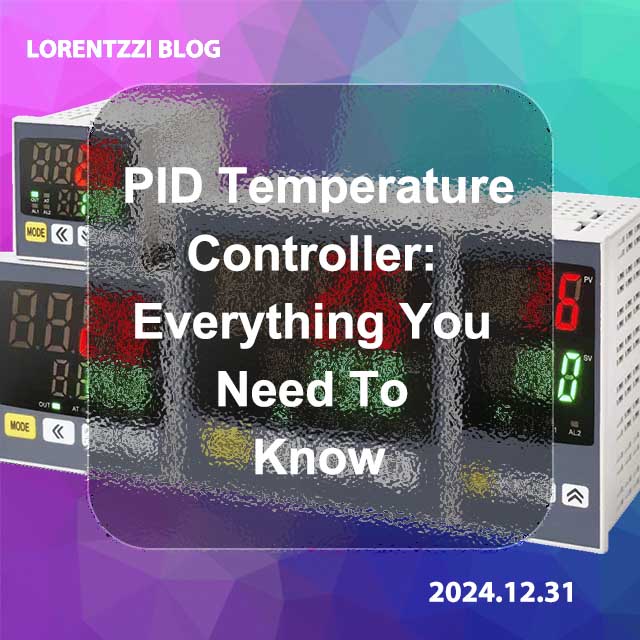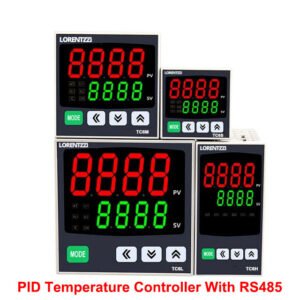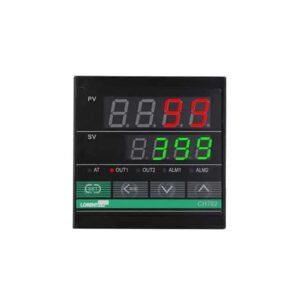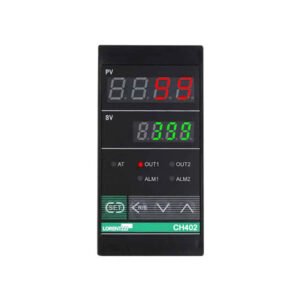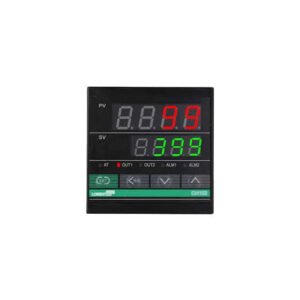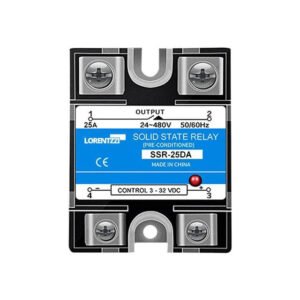In the field of industrial automation and process control, maintaining precise temperature is critical for many applications. PID (Proportional-Integral-Derivative) temperature controllers have become the preferred solution for achieving and maintaining optimal temperature. In this article, you will learn what a pid temperature controller is, history of pid temperature controller, working principle, PID explanation, advantages, types, applications and outputs of PID temperature controller, how to select and wire, PID temperature controller manufacturers.
What is a PID temperature controller?
A PID temperature controller is an electronic device designed to regulate temperature by continuously monitoring the process variable (PV) and adjusting the manipulated variable (MV) to achieve the desired setpoint. They are widely used in industries such as food processing, chemical manufacturing, and pharmaceuticals.
The history of PID temperature controller

The history of PID controllers is a fascinating story that spans centuries and includes numerous contributions from numerous engineers and scientists. The development of PID controllers dates back to the early days of proportional feedback, a key principle in control systems that was first used to regulate the speed of windmills around 1750. James Watt further applied the concept to control the speed of steam engines in 1788. In 1868, Maxwell provided the first mathematical analysis of a steam engine with a speed governor.
The invention of the PID type controller was marked by Elmer Sperry’s intuitive development of one of the earliest examples in 1911. This was followed by a major breakthrough in 1922 with Nicolas Minorsky’s analytical development of a PID controller for automatic ship steering, now considered the basis of true PID control. These milestones highlight the evolution of the PID controller from its initial concept to the complex system we know today.
How does PID temperature controllers work?
PID controllers operate on the principle of feedback control. They compare the actual temperature (PV) to the desired set point and adjust the output (MV) to minimize the difference. The three components of PID (proportional, integral, and derivative) work together to provide a balanced response to temperature changes.
The PID controller proportional (P), Integral (I), and Derivative (D) actions
- Proportional Action (P): This is the immediate response to the current error, adjusting the output to reduce the deviation.
- Integral Action (I): This action works to eliminate any residual steady-state error by integrating the error over time.
- Derivative Action (D): Anticipates future errors by responding to the rate of change of the error, providing a predictive element to the control.
Advantages of PID temperature control
PID controllers offer a variety of benefits, including:
- Accuracy: Precisely maintains temperature within a narrow range.
- Stability: Ensures stable control even in the presence of disturbances.
- Adaptability: Can be adjusted to suit a variety of processes and conditions.
- Efficiency: Reduces energy consumption by optimizing the control loop.
Applications of PID temperature controllers
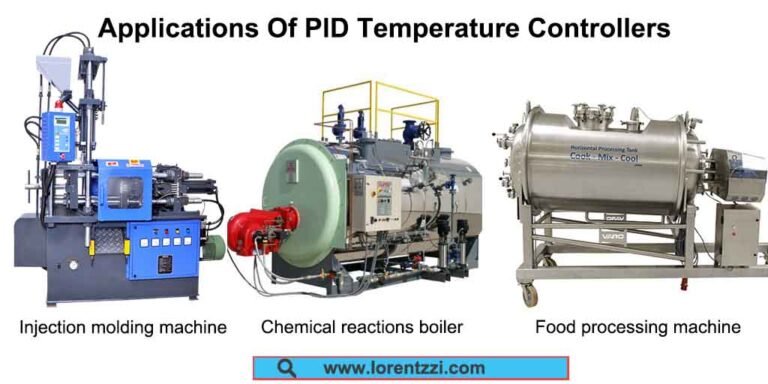
PID temperature control is crucial in a variety of sectors:
- Manufacturing: For processes like plastic injection molding and chemical reactions.
- Food Processing: Ensuring food safety and quality through precise cooking and storage temperatures.
- Pharmaceuticals: For maintaining precise temperatures in drug manufacturing and storage.
Types of PID temperature controller
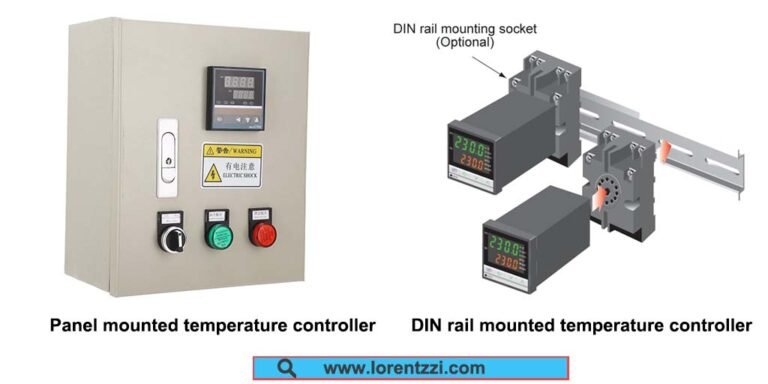
In our previously posted blog: Temperature Controller Types: A Comprehensive Guide, you can know the types of temperature controller types, but do you know how many types of the PID temperature controller in the world? Please continue to read our next section as following:
According to the different installation methods, PID temperature controllers can be divided into two types: panel installation and rail installation. The display screen of the panel-mounted PID temperature controller needs to be installed outside the distribution box, so that users can see the working status at a glance. The rail-mounted PID temperature controller needs to be installed on the rail and needs to be installed in the distribution box. Sometimes it may not be convenient to observe the instrument parameters, but if the rail mounted temperature controller has a communication function, users can also easily use an HMI or computer to view its working status.
According to the different control loops, PID temperature controllers can be divided into two types: single-loop and multi-loop. A single-loop temperature controller can only have 1 input and 1 output, and is generally used to control 1 temperature point. A multi-loop temperature controller can have multiple inputs and multiple outputs, and is generally used to control multiple different temperature points.
How to choose the right PID temperature controller
To choose the right pid temperature controller, you can follow the below 7 steps:
Step 1 Decide the panel size
There are generally five standard international DIN sizes for pid temperature controllers, namely 48*48mm (1/16 DIN), 48*96mm (1/8 DIN vertical), 72*72mm (9/64 DIN), 96*48mm (1/8 DIN horizontal), 96*96mm (1/4 DIN).
Step 2 Choose the input
Some lower-priced PID temperature controllers only support one input, such as a two-wire K-type thermocouple input, which can be a problem if your temperature sensor is a three-wire PT100 resistance temperature detector. Therefore, when choosing a PID temperature controller, ask the supplier if its product supports thermocouple, RTD, and analog inputs at the same time.
Step 3 Choose the output
PID temperature controller outputs can be relays, SSRs or analog 4-20mA, make sure the temperature controller you choose has the output you want. Generally speaking, SSR or analog 4-20mA outputs are more widely used than relay outputs in temperature control systems for reasons discussed in this article: SSR vs. AC Contactor: Which is Better in a Temperature Control System?
Step 4 Decide the working voltage
When choosing a PID temperature controller, the working voltage is also important. Make sure your voltage is consistent with the working voltage of the temperature controller. For example, if the working voltage of the temperature controller is 100-240VAC or 24VDC, you need a corresponding voltage source. Incorrect voltage may cause permanent damage to the temperature controller.
Step 5 Check whether you will need communication or not
- Assess whether your system requires integration with other devices or a supervisory control and data acquisition (SCADA) system.
- If communication is necessary, choose a PID controller that supports the required protocols (e.g., Modbus, Ethernet/IP, HART) and has the necessary communication ports.
Step 6 Confirm the alarm quantity and alarm mode
Determine how many alarms you need to monitor and the types of alarms (high temperature alarm, low temperature alarm, deviation alarm, etc.).
Step 7 Brands consideration
Choosing a branded PID temperature controller means low risk, reliable quality and good after-sales service. We have listed the 19 best temperature controller manufacturers in the world. Please read our blog: The 19 Best Temperature Controller Manufacturers in the World.
How to wire a PID temperature controller
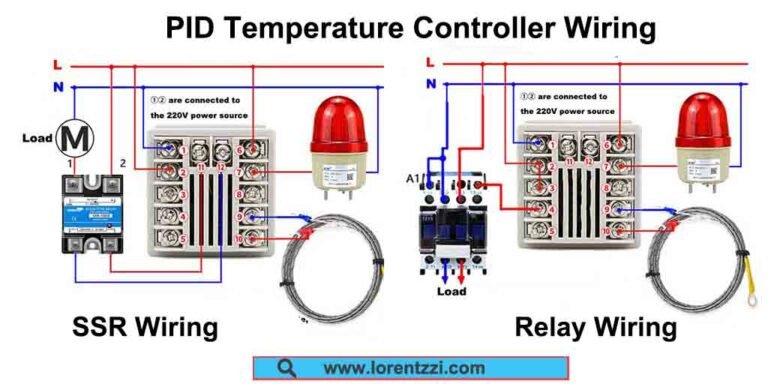
When it comes to PID temperature controllers, proper wiring is something that cannot be ignored. In our blog: How to Wire a Pid Temperature Controller: A Comprehensive Guide, you can find our solutions.
PID temperature controller outputs differences
The output of the PID temperature controller can be a transistor SSR output or a voltage-free relay output. Transistor output is more reliable and quicker to react than relay output. To learn more about the difference between these two outputs, read our article: Transistor vs. Relay Output in Proximity Sensors: What’s the Difference?
PID temperature controller manufacturers
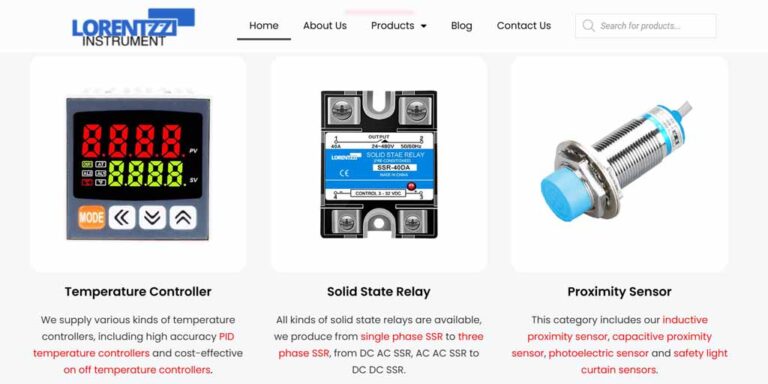
Want to find a reliable PID temperature controller supplier? We found and listed all reliable suppliers in the world, check out this article: The Best 19 Temperature Controller Manufacturers in the World.
Conclusion
PID temperature controller is an important process instrument in the fields of temperature control system, pressure control, etc. In this article, we have listed all the questions about this instrument. If you have other questions, please contact us for answers.
As one of the excellent suppliers of PID temperature controllers in China, Lorentzzi® can not only provide reliable PID temperature controllers, but also provide a complete set of temperature control solutions.

